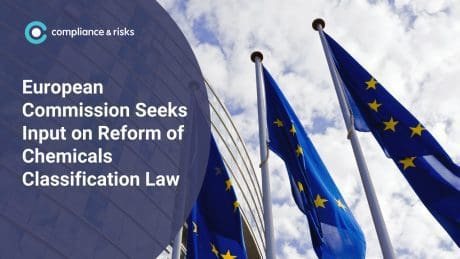
Plastics Global Commitment Model for All Products?

 The recent announcement of the New Plastics Economy Global Commitment sponsored by the Ellen MacArthur Foundation and UN Environment (the “Global Commitment”) may have gone unnoticed.
The recent announcement of the New Plastics Economy Global Commitment sponsored by the Ellen MacArthur Foundation and UN Environment (the “Global Commitment”) may have gone unnoticed.
After all, the Global Commitment joins the increasingly crowded field of multilateral plastic waste accords, such as the G7 Plastics Charter, the EU strategy for plastics in a circular economy, the Commonwealth Blue Charter, and the UN Community of Ocean Action. But the Global Commitment is, in fact, a watershed event that will likely serve as the model for various industries and their products within a circular economy.
“Go to the Source”
The Ellen MacArthur Foundation has long been advocating collaboration among the various stakeholders within industries to better ensure that the product content and design can be recovered and repurposed at a product’s end-of-life. These clarion calls have, to date, not generated a great deal of tangible cross-industry ventures impacting product design.
This is about to change as the Global Commitment binds parties at every stage in the lifecycle of plastics- from the resin maker right through to the plastic product recycler. Gone will be the days when plastics pollution will be dealt with as a waste issue alone. Instead, the Global Commitment dares to venture right up the supply chain to the product’s point of inception to address problematic materials or designs at their source.
Supply Chain- Meet Reverse Supply Chain
The Global Commitment imposes a 2025 deadline for the achievement of “ambitious” customized targets for industries in both the supply chain and end-of-life (or “reverse supply chain”), including an astonishing cross-section of stakeholders such as:
– raw material producers;
– packaging producers;
– packaging goods companies;
– durable goods producers;
– retailers;
– hospitality and food service companies;
– suppliers and investors in the plastics industry; and
– the plastics collecting, sorting, and recycling industries.
A necessary corollary to the distinct targets assigned to each of the industries (and part of the “Common Vision”) is the need for these disparate parties to combine in various ways to jointly achieve these targets. No one plastics-relevant industry can meet its targets alone, creating a dynamic suitable for new ventures among like-minded companies across various industry segments to make long-term strategic commitments binding these parties. For this, the Global Commitment is truly laudable.
“New Normal” for Plastic Packaging?
The Global Commitment aims to create ‘a new normal’ for plastic packaging. The aspirational targets are to be reviewed every 18 months, and are to grow more onerous over time. Implementation data will be published annually as a means of persuasion to advance the targets which include:
Eliminate problematic or unnecessary plastic packaging and move from single-use to reuse packaging models;
Innovate to ensure 100% of plastic packaging can be easily and safely reused, recycled, or composted by 2025; and
Circulate the plastic produced by significantly increasing the amounts of plastics reused or recycled and made into new packaging or products.
From Voluntary Goals to Product Standards?
As a extra-regulatory set of goals, the Global Commitment does not have the force of law behind it. With an initial 20% of the plastics industry already signed on, and a critical mix of cross-industry stakeholders invested in the outcome, it may be only a matter of time before the aspirational targets developed under the Global Commitment become mandatory product standards.
If you would like to find out more about how you can benefit from Circular Economy regulatory updates, sign up to our newsletter here.








